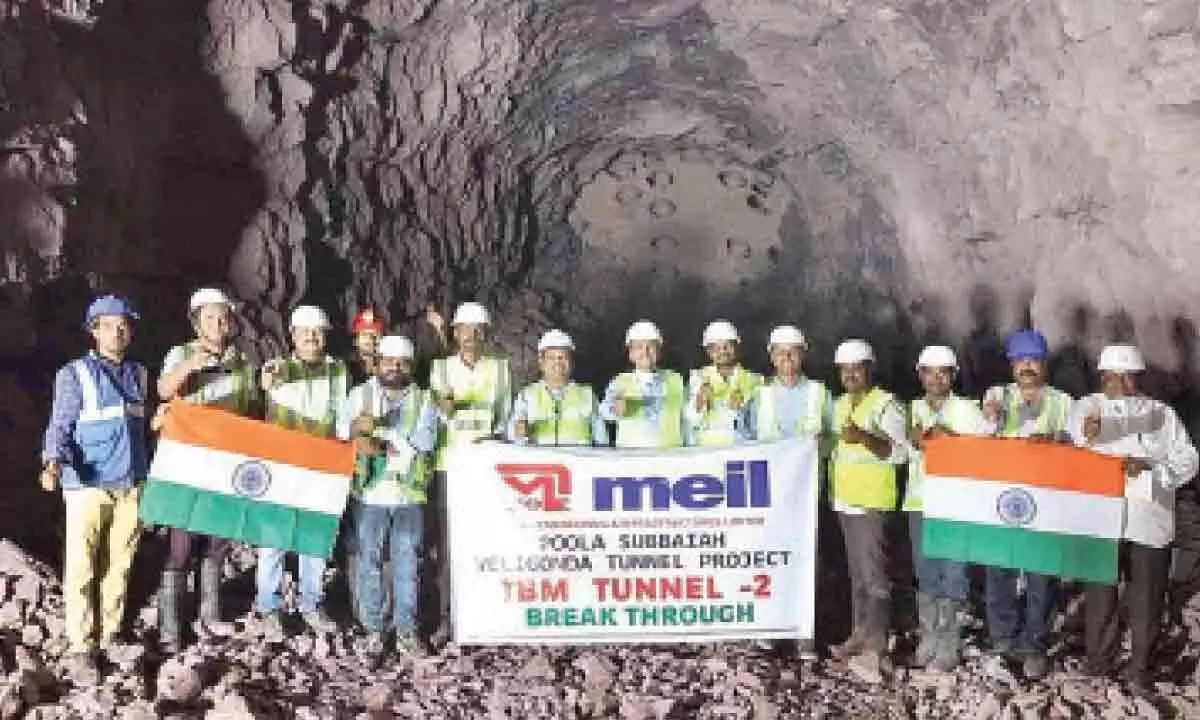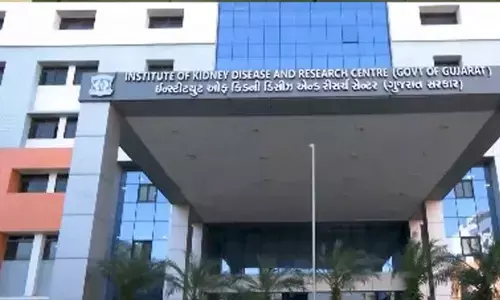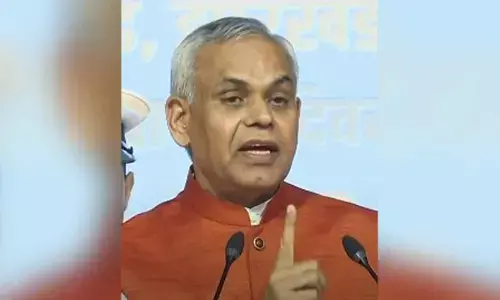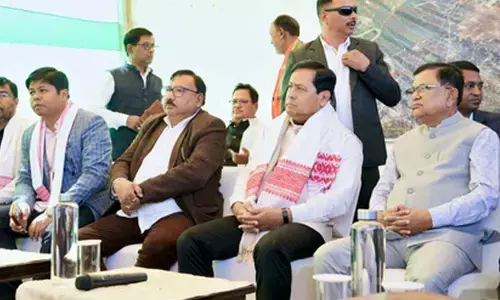Ongole: Boring of Tunnel II of Veligonda Project complete

MEIL staff celebrating breakthrough of Tunnel II of Veligonda project
- 1. The project has two tunnels, Tunnel I 18.820 KM long with a diameter of 7.00 meters, and Tunnel II 18.838 KM long with a diameter of 9.20 meters
- 2. It takes about 10 days for Tunnel I and Tunnel II to fill the reservoir up to the dead storage of 10 TMC feet
Ongole : The boring of the second tunnel of the Pula Subbaiah Veligonda Project, the longest tunnel in the Asian continent is completed successfully, informed the officials on Wednesday.
The Pula Subbaiah Veligonda Project is envisioned to provide irrigation water to 4.473 lakh acres and 15.25 lakh people in the 30 mandals of the erstwhile Prakasam, Nellore and Kadapa districts. The then chief minister YS Rajasekhara Reddy laid the foundation for the project on Oct, 2004, and the construction was taken up in two phases.
The estimates for the completion of the project increased from Rs 765 crore to Rs 8052.10 crore through various GOs, in the meantime.
The project has two tunnels, Tunnel I 18.820 KM long with a diameter of 7.00 meters, and Tunnel II 18.838 KM long with a diameter of 9.20 meters. The first tunnel has a discharge capacity of 734.40 crore litres per day, while the second tunnel has a discharge capacity of 2099.52 crore litres per day. It takes about 10 days for Tunnel I and Tunnel II to fill the reservoir up to the dead storage of 10 TMC feet.
The first tunnel of the project was completed on Jan 13, 2021, and the second tunnel boring was completed on Jan 23, 2024. The project contractor Megha Engineering and Infrastructures Limited announced that they achieved the breakthrough in the second tunnel on Jan 23.
The ousters of the project are demanding the government to complete the R&R package distribution, and housing in the new colonies immediately, as they require to vacate their villages to fill the reservoir, and supply water for the drinking and irrigation needs.















